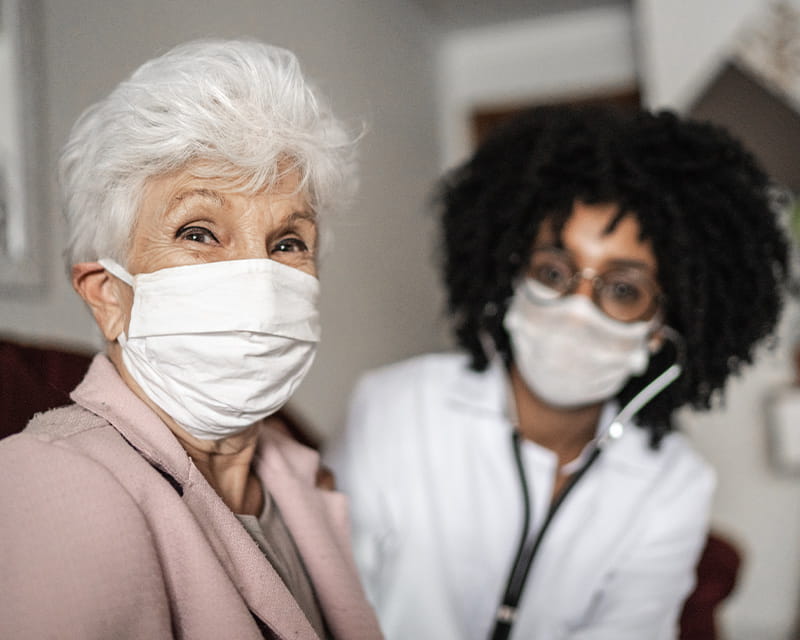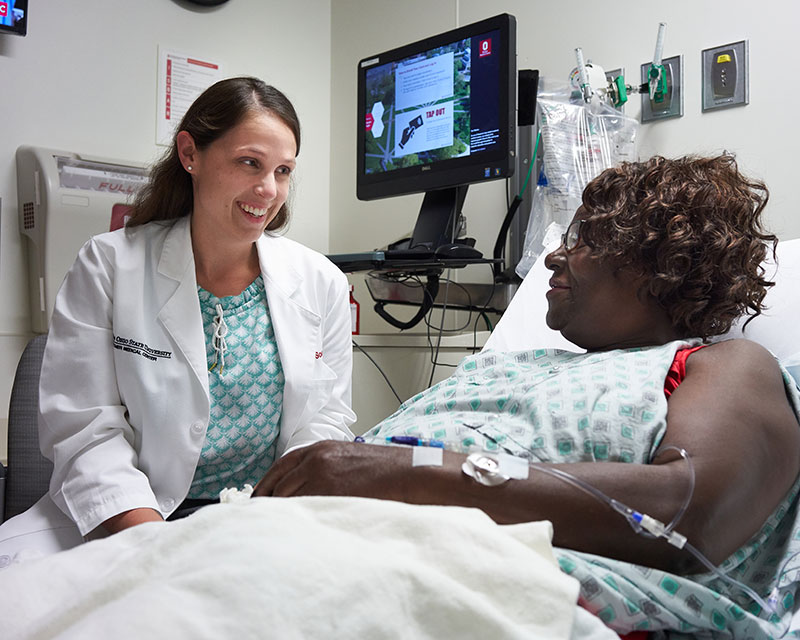
Ohio State offers comprehensive, research-driven care developed specifically for older adults with cancer
 Less than a year after becoming the first emergency department (ED) in the Midwest to earn Geriatric Emergency Department Level 1 Accreditation, in 2019 The Ohio State University Wexner Medical Center again made headlines for its efforts to improve emergency care for older adults.
Less than a year after becoming the first emergency department (ED) in the Midwest to earn Geriatric Emergency Department Level 1 Accreditation, in 2019 The Ohio State University Wexner Medical Center again made headlines for its efforts to improve emergency care for older adults.
Emergency medicine physician and associate professor Lauren Southerland, MD, who helped spearhead that accreditation effort, has received an $800,000 K23 award from the National Institutes of Health (NIH) to evaluate the use of multidisciplinary geriatric assessments in Ohio State’s ED observation unit.
She and her colleagues, including NIH-funded researcher Jeffrey Caterino, MD, MPH, are working collaboratively to improve geriatric screenings, diagnoses and outcomes during and after ED visits.
Throughout her career as a busy ED physician, Dr. Southerland, who is fellowship-trained in geriatrics, has noticed that most traditional emergency rooms are not set up to provide optimal care to aging patients. Older adults, especially those who have multiple chronic conditions along with mobility problems or cognitive impairment, often need extensive evaluations by staff with specialized training.
“An 80-year-old man who breaks his ankle needs to be treated much differently than a 25-year-old with the same injury,” Dr. Southerland says. “With our older patients, we need to consider the medications they’re taking, whether they’re at risk for future falls, if they have medical problems that could impact healing or whether they have difficulty caring for themselves at home. Conducting these types of assessments and pairing them with thorough follow-ups after discharge takes time.”
Her novel study, Implementation of Multidisciplinary Assessments for Geriatric Patients in an ED Observation Unit (IMAGE), will compare differences in outcomes among 350 geriatric ED patients.
Half will receive typical care, and half will undergo a comprehensive screening designed to identify underlying problems like delirium, polypharmacy, falls and social needs. Patients in the experimental group will be screened in the ED’s geriatric observation area, a special unit that can evaluate at-risk patients for up to 24 hours.
Dr. Southerland says her goal is to see whether the screening protocol impacts long-term quality of life. The team will track whether patients returned to the ED, gather patient-reported outcomes, monitor functional status and confirm that patients didn’t need nursing-home care after discharge.
“If our results suggest multidisciplinary geriatric assessments benefit individual ED patients, we’ll be one step closer to rolling out this intervention to other hospitals,” Dr. Southerland adds. “We’ll extend our efforts to improve outcomes for as many patients as possible.”
Two other Ohio State faculty members are also leading studies that aim to improve diagnosis and treatment among older adults in the ED.
Dr. Caterino, professor of emergency medicine and internal medicine, and vice chair of research for the Department of Emergency Medicine, is in the third year of his R01 grant to study immune system function within the urinary tract of older adults. Because urinary tract infections (UTIs) are one of the greatest contributors to disease in aging patients, he and his team aim to characterize the levels of urinary antimicrobial proteins (AMPs), which are key components of the innate immune response. They’re also trying to identify the usefulness of urinary AMP levels as diagnostic markers of UTIs in the geriatric population.
A third study, led by research fellow Katherine Buck, MD, seeks to improve diagnostic accuracy among older ED patients who may have pneumonia, which is often harder to diagnose in people over 65. Dr. Buck, who completed her residency in emergency medicine at Ohio State in June 2019, is examining whether small antimicrobial peptides found in blood and urine can help confirm pneumonia in geriatric patients who have symptoms like chest pain or shortness of breath. Her efforts are supported by a two-year, $100,000 per year grant, funded by the National Institute on Aging and Society for Academic Emergency Medicine Foundation.